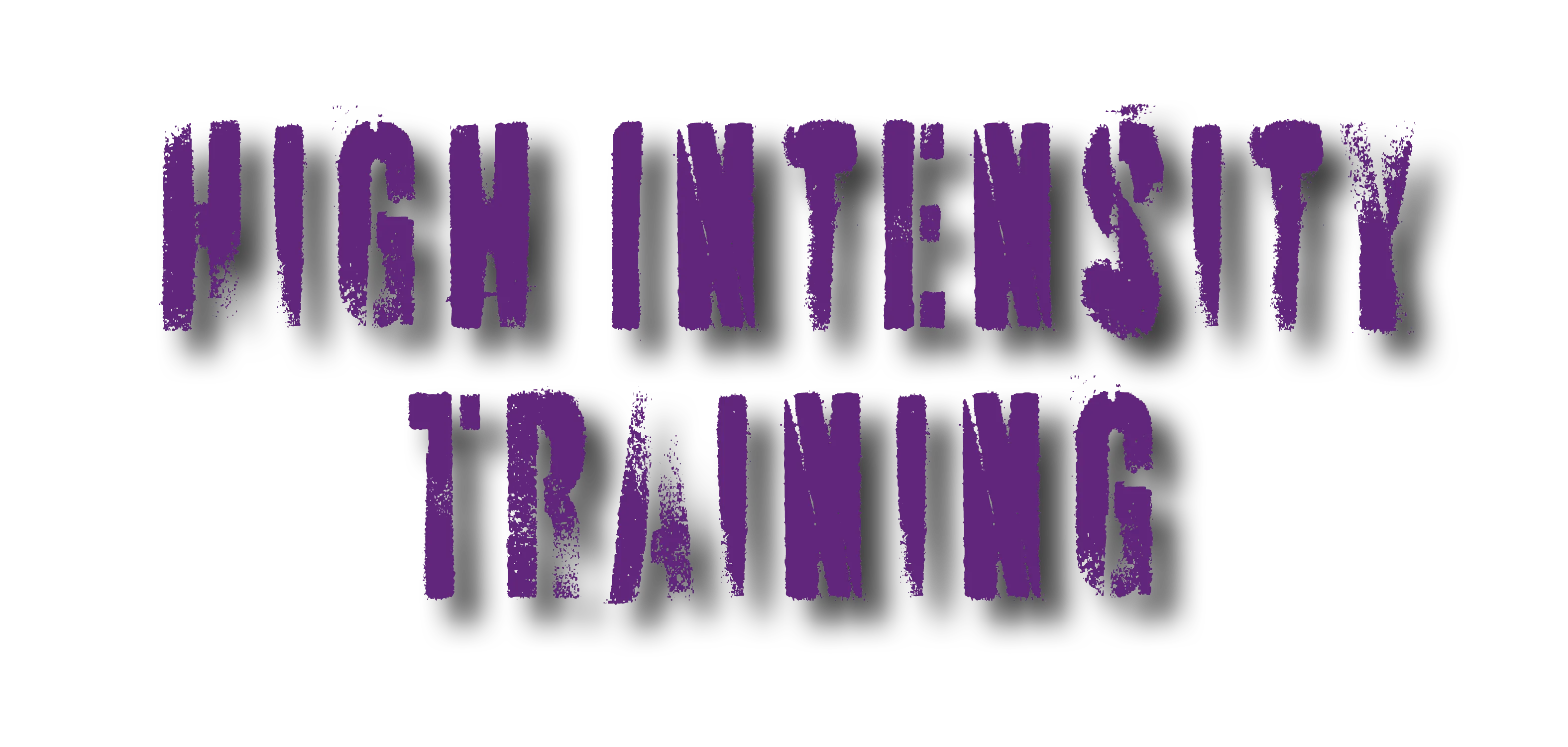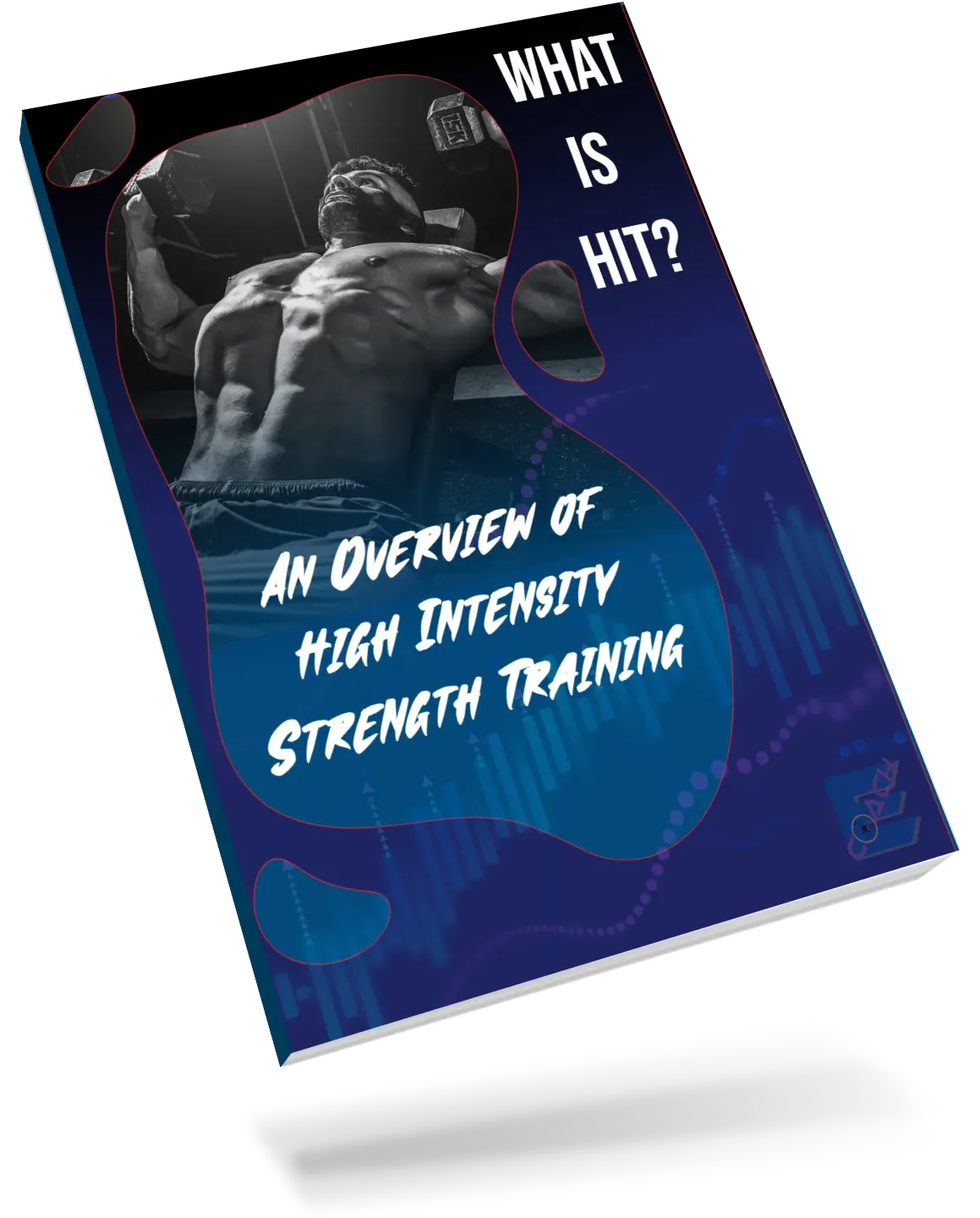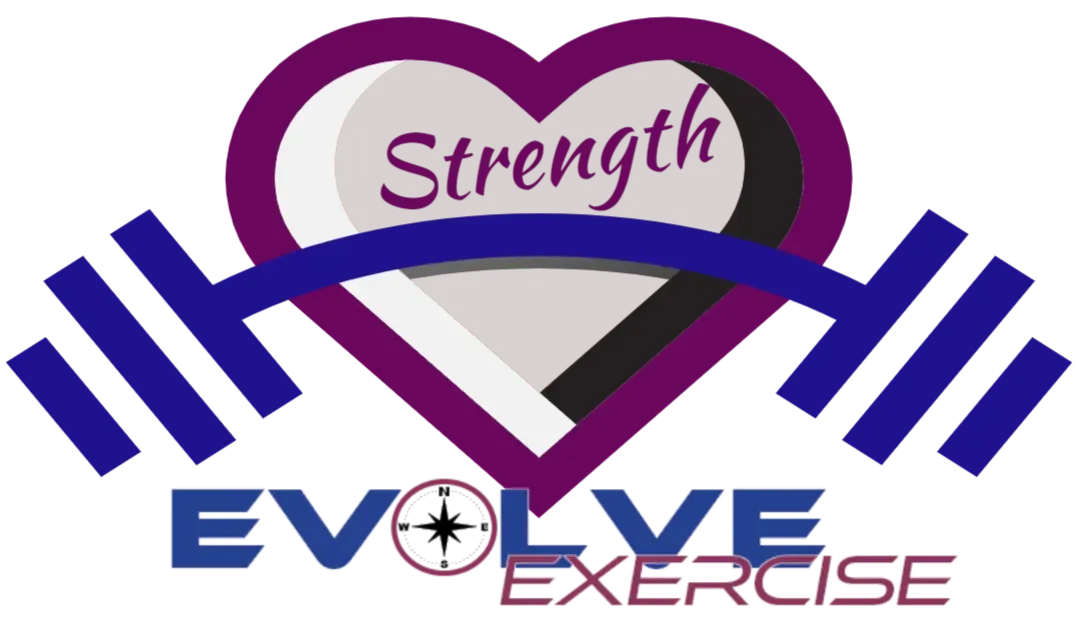MOVEMENT


What IS HIT?
HIT or High Intensity Training, coined by Ellington Darden, PhD back in the 1970’s, refers to high effort strength training. However it is much more than simply high effort strength training. Here are some of the primary governing principles for HIT:
Intensity
In this case intensity refers to the effort, not the weight used. In my opinion, this is what intensity should always be referring to when pertains to exercise. In other words, it describes your actual work relative to your maximum ability. If you could do 10 reps maximum and you did 8 then you worked at 80% intensity.
It is generally recommended to train to Momentary Muscular failure or 100%effort (in perfect form).
Progression
While not exclusively associated with high intensity training, HIT lays out a systematic means of progressing. HIT progression is based upon the performance of your most recent workouts. For example, if you reach a plateau you might consider reducing the total number of exercises in a given workout, the frequency of workouts, the exercise selection, etc.
Form
Some lip service had been given to exercise form prior to the advent of HIT. However, HIT/Nautilus training was the first to start defining what proper form actually was for each exercise. Form is critical not only for the safety of an exercise, but the effectiveness of an exercise. I would consider this the most important principle of all. Without proper form you compromise and confound everything else.
Duration
The time you spent working out is also a critical piece of the HIT/Nautilus protocol. As you work out harder, by necessity, you need shorten your workout duration.
“The secret, if there is one, is high intensity. And when you actually train with high-intensity, you don’t need a lot of volume.”
-Arthur Jones (Inventor of Nautilus)
Frequency
As with duration, the more skilled you get at working hard, the less frequently you need to workout. In order to recover from the exhaustive effects of exercise, you need to allow the body to rest. One of the biggest mistakes seasoned trainees make is working out too often.
Sequence
The sequence of exercises plays a critical role in programming. In general your workouts should always start with the largest muscles and finish with the smallest muscles. While there are exceptions to this rule, understand that ALL exercises will have an impact on the exercises that come after it. You should program your priorities toward the front of your workouts.
Since Arthur Jones (inventor of Nautilus) laid out these guidelines back in the 70’s there have been many iterations of HIT and while some have improved upon the original concepts, others have detoured away from the original governing principles. Protocols such as Heavy Duty and Super Slow, in my opinion, stayed true to the original ideas while introducing meaningful modifications that may serve some people even better.
While some HIT advocates are viewed as crazed zealots, I have empathy for their plight. Most HIT advocates use logic, reason and evidence based science as their guide and the emotionally driven, haphazard approach to exercise in pop culture can be very frustrating.
While I can only speak from my own experience (spanning over 30 years, including personally supervising over 100,000 1-on-1 workouts), HIT is the best form of training for almost everyone I have ever worked with.

10 Science Backed Reasons
to
Strength Train
Several science-based reasons that make strength training highly beneficial. Here are a few:
Skeletal muscle quality and function decline with age and this is known as sarcopenia. Studies have shown that skeletal muscle mass will decrease at a rate of 1–2% per year after the age of 50, and skeletal muscle strength will reduce by 1.5% at age 50–60, even leading to sarcopenia. This can have dire consequences on our ability to function as we get older. Sarcopenic individuals are highly susceptible to falls and disability, and there is a turning point toward end-stage functional decline. Sadly, in large part, this can be prevented. Current studies have found that resistance training can alleviate age-related skeletal muscle degeneration and improve muscle strength, while also regulating blood glucose, and controlling blood pressure in the elderly.
Strength training should be included in everyone's routine. You can gain tremendous benefits in a minimum amount of time investment (as little as 30 minutes weekly).